By Nick Stephenson (Part Four of… Well, several).
“Publishing a book is like stuffing a note into a bottle and hurling it into the sea. Some bottles drown, some come safe to land, where the notes are read and then possibly cherished, or else misinterpreted, or else understood all too well by those who hate the message. You never know who your readers might be.”
We’ve talked about coming up with a great “idea” and how to test it. We’ve talked about turning that idea into a premise, an outline, and a scenes list. And we’ve talked about how to get the words onto the page, and get your final manuscript ready to rock.
Missed those parts? Catch up here: PART ONE | PART TWO | PART THREE
With all the hard work done to get your book ready for publication, it’s all too common for feelings of self-doubt to creep in. What if my book’s not good enough? What if people hate it? What if it actually does well?
Pesky humans that we are, it’s natural to be wary of change. Even change for the better. The good news is, if you’ve followed along during this course, chances are you have a book that people are going to love. The hard part is figuring out who those people are, and then telling them about it.
Which is where marketing comes in.

Building up your audience and your sales means focusing on a few very specific actions that will really move the needle for you – without getting distracted by every new “shiny red ball” that comes along (Snapchat, anyone?).
Here’s a breakdown of how it all works – specifically, how to go form $0 to $1,000 per month with book sales (and everything you need to have in place) – and then we’ll go through each part in more detail underneath:
^^ this video lays it all out for you. We’ll dive in a little deeper underneath, starting with…
Underneath all the bells and whistles, Amazon is essentially a search engine. Specifically, it’s the third most-visited search engine in the world, and the largest “search engine for shopping”.
The good news? That means people browsing Amazon are already in a buying mood. The bad news? You’ve got millions of other similar titles to compete with.
One of the first things we need to do to “set up” your books in the right way, is think about how your work ties into the “search engine algorithm” that makes Amazon tick. In other words, how do we get Amazon to show your book to the right people at the right time?
Part of this means understanding how Amazon (and the other stores) catalogues your books, and that’s where “metadata” comes in. Specifically, keywords and categories.
On Amazon and the other stores, you can choose 2 categories in which you’d like to list your book during the publishing process.
Some good advice here – choose a category that’s as specific as possible, and as narrow as possible. If you’re writing “romance”, don’t choose “romance” as your category. Choose something like “romance -> paranormal romance -> werewolves and shifters”.
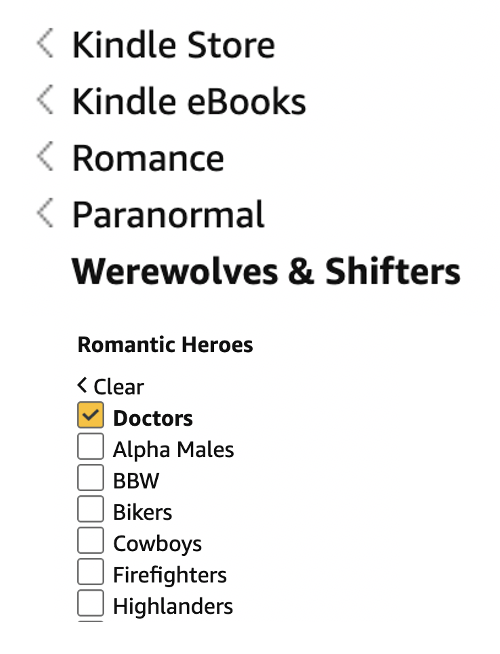
^^ for example. Obviously don’t choose that category if you write hard-boiled crime thrillers.
The sticking point: when choosing your categories, you’ll be limited to BISAC categories – in other words, “the categories that most high street bookstores recognise”. Which can be somewhat frustrating when the option you want isn’t available.
In which case, an easy solution – shoot an email to Amazon KDP Support (via your publishing dashboard) and ask them to manually add you to that category (spelling out the full path for them, as shown above).
Then you’ll be added to your category of choice within 24-72 hours. Easy! In fact, there are dozens of categories on Amazon that most people never even see – but your book can be listed in them. Contact KDP Support and they’ll be able to manually add you to as many as you like.
![]()
While your category choice will largely target readers who like to click through Amazon’s browsing options, your keyword choices will target readers who prefer to type search terms into the website.
There’s a similar principle here – choose a “keyword phrase” that’s as narrow as possible, while still giving you a decent amount of traffic (clicks).
This can be a little tricky to quantify – but here’s a quick run-through of what to look for:
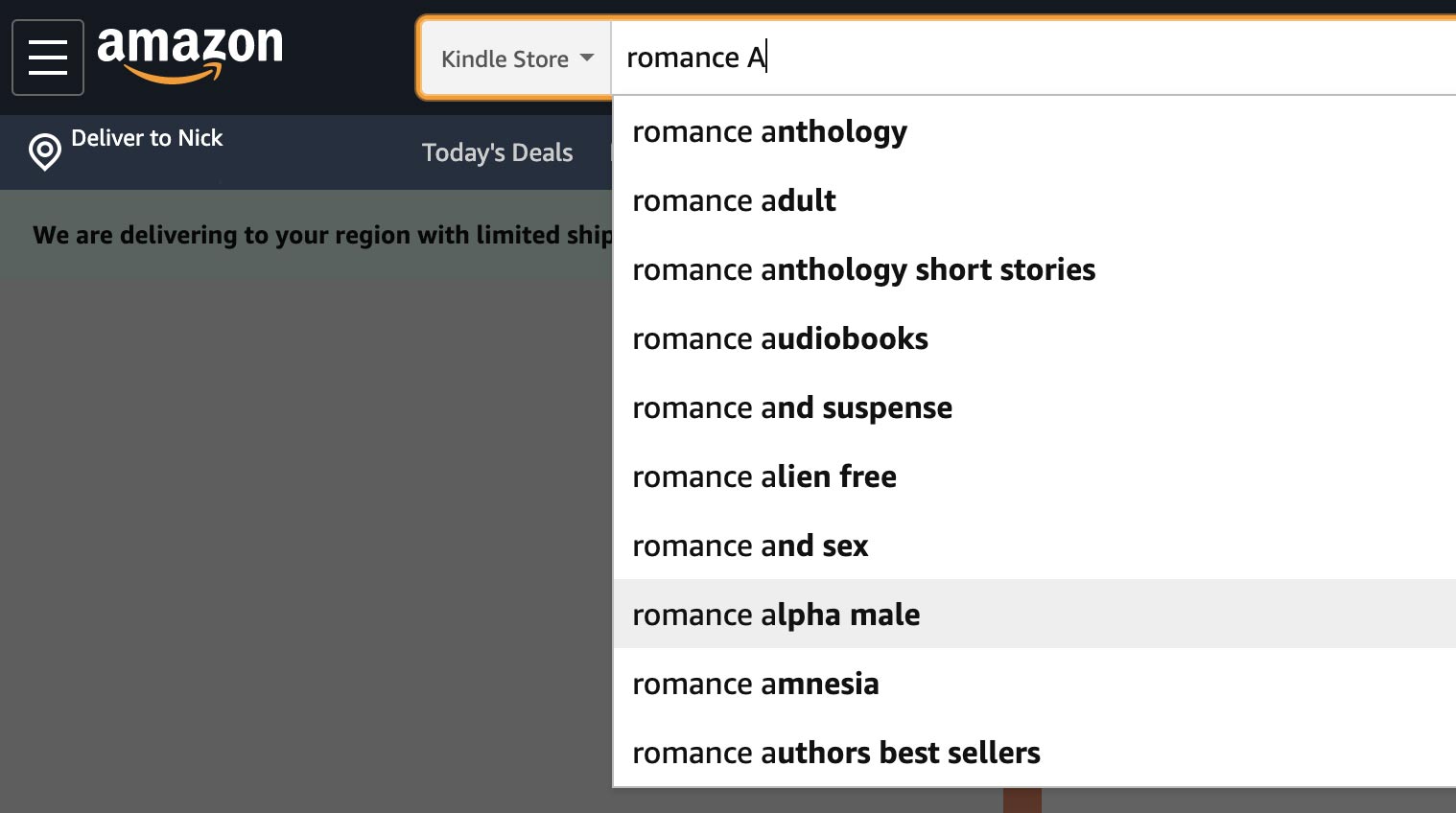
Start typing the “root keyword” of your book – for example, “romance” or “thriller”. Then see what suggestions pop up when you start adding letters (eg, “romance A”, “romance B”, “romance C”, etc).
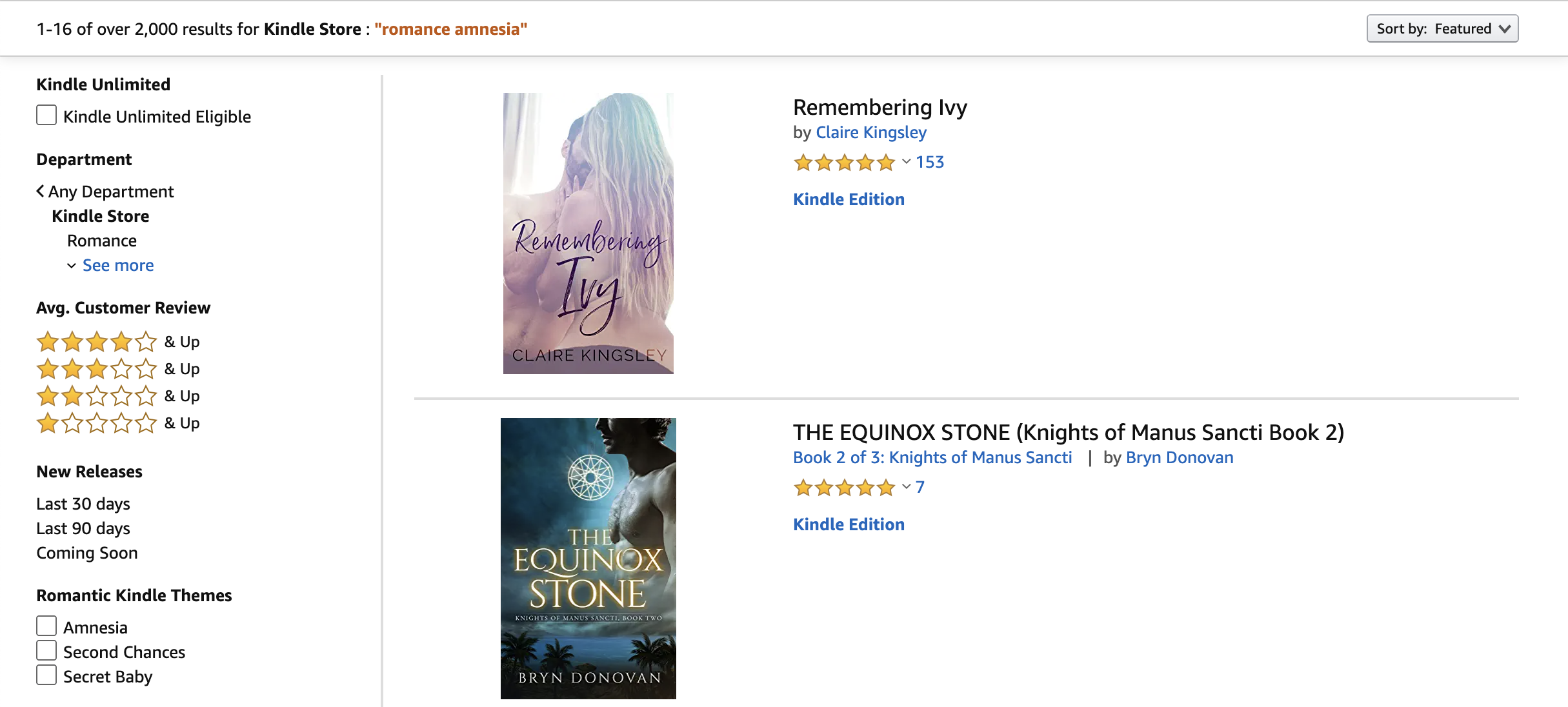
Click through to these suggestions and take a note of how many titles show up. You’re ideally looking for something with less than 20,000 other books.
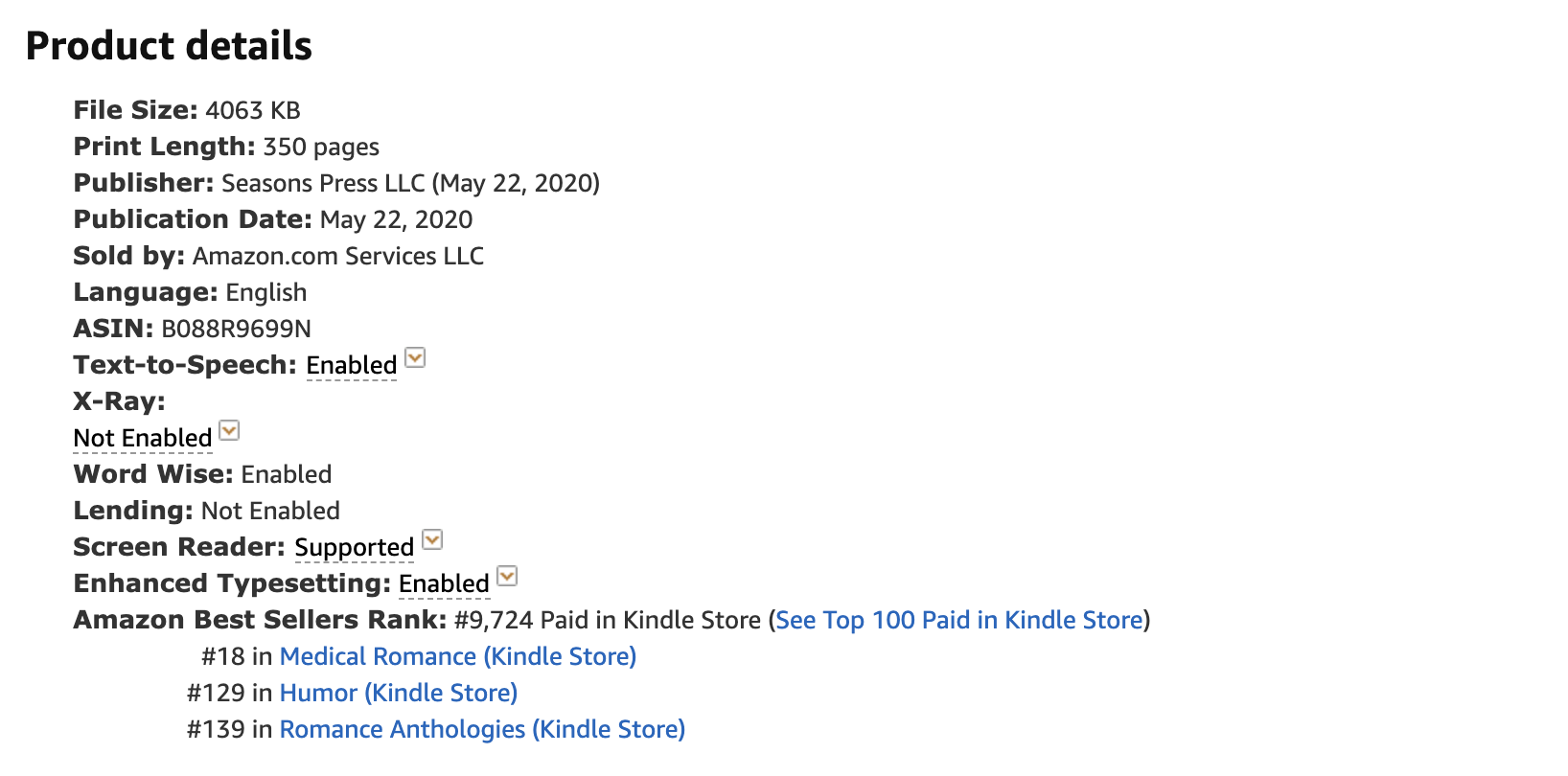
Finally, click through to the first 3-5 books on the page and check the sales rank. How are they selling? If those numbers suggest super-high blockbuster level sales, it might not be a good keyword choice (because you can’t compete – the higher selling books will appear higher up the page).
Similarly, if the sales are super low, that keyword phrase might not have enough traffic, so it might be a bad choice for that reason.
Tip: you can click through and check the sales rank of individual books, or you can just take a peek at the number of reviews. If all the books have good reviews, it might be worth clicking through to get more data. If all the books have very few (or zero) reviews, you can probably move on to your next keyword choice.
Once you’ve chosen 7 keyword phrases, add them to your publishing dashboard and you’re good to go!
Choosing the right categories keywords can be helpful in getting your book noticed, and KEEPING it that way. In most cases, though, it isn’t a “magic bullet” by itself – you also have to drive traffic and sales to those books – but it can certainly help you stay as high in the charts as possible, for as long as possible. So don’t skip this part!

While it’s true that your cover gets you clicks, it’s your book description that has the biggest influence over whether or not someone actually BUYS your book.
And while most authors will happily pay a professional to design their cover, they will usually write their product descriptions themselves.
The problem? Writing a book isn’t the same as writing a book description. Your book description is essentially “sales copy”, which is an entirely different discipline.
Most authors will simply “list out the major plot points” – but that doesn’t tend to be particularly compelling.
Instead, focus on the core conflict – and the stakes at play (remember those from earlier?).
An astronaut is stranded on Mars. He must use his skills as a botanist to survive against the brutal Martian wilderness until Nasa can bring him home – and they’ve only got 31 days.
Okay, so it’s not that bad. It contains all the required features (the hero, the opposition, the conflict, and the stakes) but it’s rather dull. Here’s the actual description they went with:
I’m stranded on Mars.
I have no way to communicate with Earth.
I’m in a Habitat designed to last 31 days.
If the Oxygenator breaks down, I’ll suffocate. If the Water Reclaimer breaks down, I’ll die of thirst. If the Hab breaches, I’ll just kind of explode. If none of those things happen, I’ll eventually run out of food and starve to death.
So yeah. I’m screwed.
So much more interesting! Notice how this focuses far more on the CONFLICT and the STAKES?
Rule of thumb: don’t just list out the plot or the premise. Focus on the EMOTIONAL ENGAGEMENT your reader will feel.
And if you need help getting your product description to look good (you get given a horrible HTML box to play with) check out Kindlepreneur’s Amazon Description Generator right here – it’ll make your life much easier.

By this point, your book is ready to publish. But there’s one more thing to consider…
How are you going to build an audience?
Once of the most versatile and powerful business assets you can have is an email list. An email list of readers who ACTUALLY LIKE YOU and are waiting for you next release.
Reader Magnets are what bring readers to YOU. They’re an irresistible force that draw readers in – the promise of getting great value content and building a valuable connection.
That’s what it’s all about, after all – making meaningful connections with your audience – building a direct line to your readers. This is what happens when a reader decides to trust you with their email address. And you can make this work using Reader Magnets.
In short, a Reader Magnet is a book (or short story, or “something else”) that you offer to readers in exchange for them joining your email list – which you advertise in the front and the back of all your books.
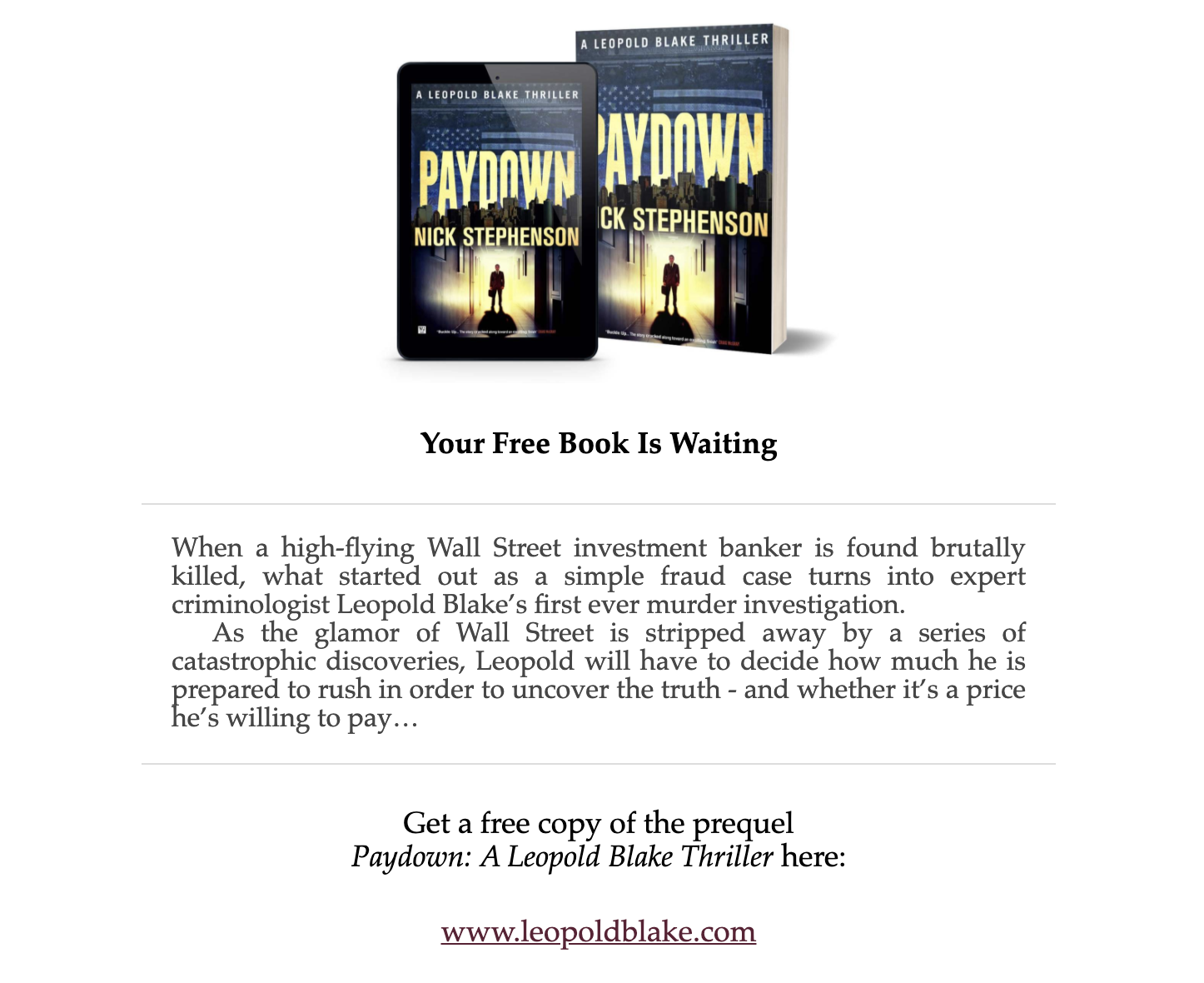
I see this all the time: “Sign up for new releases here”. “Join me on Facebook here”. “Follow me on Twitter here”.
But that’s missing the point. You need to give readers something of real value. Something more than an email every few months when you release a new book, or a tweet about your latest sale. Or a picture of your cat. You need to give them an irresistible reason to give you their email address. You need to say:
“Get the next book free when you sign up for my mailing list”.
Or
“Get exclusive, never-before-published content when you sign up for my mailing list”.
It’s so simple. Whether you’re self publishing a book or you’ve got a backlist of traditionally published titles, it works. All you need to do is prove to your readers that you can add VALUE.
The reality is that people don’t want to join a random newsletter. But if they enjoy your work, they’ll want more of it. So offering them “more” in exchange for joining your email list is a great way of getting those people who love you to keep in touch.
The best Reader Magnets follow these rules of thumb:
Here’s a run-through of how understanding the Amazon algorithm and setting up a simple Reader Magnets system can work wonders:

With all the “setup” done, it’s time to think about how you’re going to get eyeballs on your work. In essence, to sell books you need two things:
Once you figure out (a) how to get traffic, and (b) how to convert that traffic into sales – profitably – then you can scale the whole thing up as much as you like.
Like anything else worthwhile, it takes time, patience, and experience. But understanding “how everything fits together” will make your life easier, and potentially shave YEARS of “experimenting” off your timescales (hoorah!). Here’s a breakdown of what that roadmap looks like
In essence, every marketing activity you use should either (a) get you traffic, or (b) get you sales. Either immediately, or in the long-run.
And if you’re just getting started, there are a few “big wins” you can enjoy to get the ball rolling…
With your Reader Magnet in place, and if you’re using “permafree” or free promotions on your books, you will start growing an email list pretty quickly. But how can you speed things up and make the most out of your subscriber list, regardless of how small it might be?
If you’re just getting started, chances are you don’t have a huge email list or an endless ads budget. So, how can you get traction faster?
With Joint Promotions, the basic premise is this: “What if, instead of spending 6 – 12 months building up an audience of your own, you could ‘borrow’ the audience of someone else?”
In practical terms… if you’ve got 300 people on your mailing list, Facebook page, Twitter account, whatever….
And you find 3 other people with a similar reach…
Next time you run a promotion or launch a new book, you’ll launch it to 1,200 people instead of 300.
The key is reciprocity. Offering value. Learning how to network effectively.
I just looked back over the last 12 months and calculated that my business generated $400,000+ as a DIRECT result of working closely with other people.
So, of course, I’m doubling down on this very simple strategy:
Find more people like that. Do more cool stuff with the people I already know.
Simple, right?
No fancy advertising strategies, no super-wowza publicity stunts, no over-complicated psychoanalytical software and business automation…
Just good ol’ fashioned network building and overdelivering value to my partners.
“As an entirely unknown author, no mailing list, no back-catalog, nothing, I got sales and good reviews from the get-go.”
I’ve used 4 approaches that have delivered consistent results, regardless of what stage you’re at.
They are:
Notice, I’m not talking about “evergreen email funnels” or “paid advertising” or Snapchat, or [INSERT LATEST TECH CRAZE HERE]. Instead, I want to talk about strategies that are simple, cheap (or free) and get results – whatever stage you’re at.
All those other complicated things can come later, if you want. Get the basics right first.
Want to learn more about the different types of join promotion, and how to set everything up? Check out this mega-article over at the blog.
![]()
Above, I’ve listed out a handful of effective ways to get eyeballs on your work, that don’t require you to have a fat marketing budget (in many cases, these strategies won’t cost you anything).
But what about when you’re ready to scale up and invest some cash?
The reality is, if you want to get beyond a certain point, you’re going to have to splash some cash on advertising.
If you get it right, you can build an “ads machine” that can bring you a solid ROI, requiring only a few hours a week to maintain (so long as you’ve got all the “other stuff” right first – as we’ve talked about).
Advertising is an essential part of any author’s marketing tool box – and with so many different platforms and providers to choose from, it can get overwhelming pretty quickly.
So, in an effort to avoid that, we’re going to cover paid advertising in the next section – click the button below to jump in…
Take a look at self-publishing formula’s Ads for Authors program and we’ll send you an exclusive bonus bundle when you enroll – more details here.